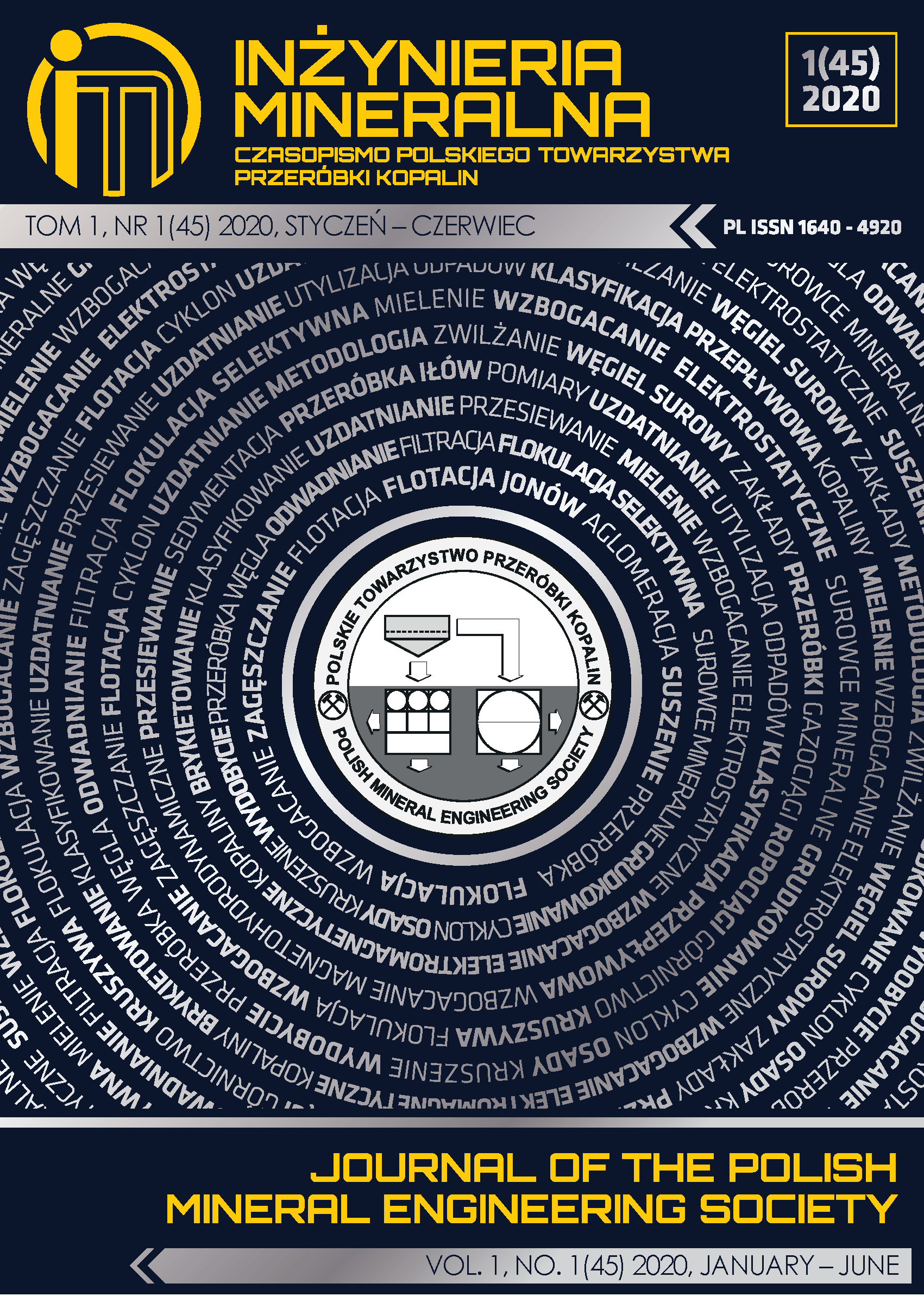The Comparison of Main Copper Sulphide Minerals Beneficiation Under Laboratory and Industrial Conditions at the KGHM Concentration Plant
Abstract
The Zechstein copper ore deposit located on the Foresudetic monocline has a complex geological structure both in lithological and mineralogical aspects. The significant variability in quantity and quality of minerals deposited in the ore bed is one of the factors determining the susceptibility of copper ore to beneficiation based on flotation, which is carried out in the KGHM Concentration Plant. Based on the algorithm developed, flotation experiments on a laboratory scale have been conducted to predict the upgrade rates under industrial conditions. This paper provides the results of the mineralogical examination of the flotation products performed by one of the KGHM Concentration process lines and compares the beneficiation of various copper sulphide minerals. The results of the laboratory tests have been compared with the results of sampling carried out simultaneously at the process line. A procedure has been proposed to develop equations defining the industrial upgradability curves for copper sulphide minerals under the KGHM Concentration Plant conditions.
This journal permits and encourages authors to post items submitted to the journal on personal websites or institutional repositories both prior to and after publication, while providing bibliographic details that credit, if applicable, its publication in this journal.







.png)
